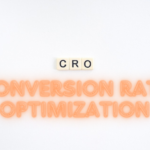Did you know that over half of all businesses consider demonstrating the ROI of marketing activities a top challenge? If your ads feel more like a money pit than a lead magnet, you’re not alone. Struggling with a low Return on Ad Spend (ROAS) can be a major pain point for digital marketers and business owners alike.
Imagine pouring your budget into campaigns that generate minimal conversions. This translates to dwindling marketing budgets, a frustrated sales team, and ultimately, missed growth opportunities for your business. It’s a cycle no marketer wants to be stuck in.
The good news is that improving your ROAS doesn’t have to be a mystery. This comprehensive guide will shed light on the key strategies you can implement to maximize your return on investment and finally see those ad clicks translate into sales.
We’ll break down the concept of ROAS and equip you with actionable tactics to get your campaigns back on track.
What is Return on Ad Spend (ROAS)?
In the whirlwind of digital marketing metrics, Return on Ad Spend (ROAS) stands out as a beacon of clarity. It’s a straightforward yet powerful metric that cuts through the noise and tells you exactly how much revenue your advertising efforts are generating. But what exactly is ROAS, and why should it be at the forefront of your marketing strategy?
Understanding ROAS: A Simple Formula, Big Impact
Imagine this: you invest $100 in an online advertising campaign. Ideally, you expect to see a return on that investment. Return on Ad Spend (ROAS) helps you quantify that return by expressing it as a ratio. Here’s the simple formula:
ROAS = Total Revenue Generated from Ads / Total Ad Spend
So, in our example, if your campaign generated $300 in sales, your ROAS would be:
ROAS = $300 / $100 = 3
Here, a 3:1 ROAS indicates that for every dollar you spent on advertising, you generated $3 in revenue. Now, scale that up across all your campaigns. A healthy ROAS signifies that your advertising efforts are efficient and effective, effectively stretching your marketing budget further.
What are the Benefits of Calculating ROAS?
Think of ROAS as a bridge connecting your ad spend to your business goals. Here’s why it holds such importance:

#1. Measures Marketing ROI: ROAS directly impacts your overall marketing Return on Investment (ROI). A strong ROAS signifies that your advertising dollars are working hard, generating revenue that contributes to your bottom line.
#2. Data-Driven Decision Making: By tracking Return on Ad Spend (ROAS) across different campaigns and platforms, you gain valuable insights. You can identify which strategies are delivering the best results and optimize your budget allocation accordingly.
#3. Aligns with Business Goals: Whether your focus is on driving sales, increasing brand awareness, or capturing qualified leads, optimizing ROAS helps you achieve those goals more efficiently. A high ROAS translates to more conversions, a stronger brand presence, and ultimately, a thriving business.
#4. Improved Budget Allocation: By analyzing ROAS across different campaigns and platforms, you can identify which channels are delivering the highest return on your investment. This allows you to strategically allocate your marketing budget towards the most effective strategies, maximizing the overall impact of your spending.
#5. Enhanced Campaign Targeting: Return on Ad Spend (ROAS) can be a powerful tool for identifying ideal customer segments. By analyzing which demographics or audience interests lead to higher ROAS, you can refine your targeting strategies. This ensures your ads are reaching the most receptive audiences, leading to better conversion rates and a more efficient use of your budget.
#6. Competitive Benchmarking: While keeping your own Return on Ad Spend (ROAS) metrics in mind is crucial, you can also leverage industry benchmarks or competitor data (when available) to gauge your performance. This comparative analysis can help you identify areas for improvement and understand where you stand within the competitive landscape.
#7. Improved Communication and Collaboration: Return on ad spend provides a clear and concise metric that can be easily communicated to stakeholders across different departments within your organization. This shared understanding fosters better collaboration between marketing, sales, and finance teams.
By demonstrating the tangible return generated by advertising efforts, ROAS can help secure buy-in and support for future marketing initiatives.
In essence, Return on Ad Spend (ROAS) empowers you to move beyond simply running ads and enter the realm of strategic marketing. By understanding your return on ad spend, you can make data-driven decisions, maximize the impact of your campaigns, and achieve those coveted business goals.
What is a Good ROAS?
Unfortunately, there’s no one-size-fits-all answer to what constitutes a “good” ROAS. It depends on several factors unique to your business and industry. Here’s why a universal answer is elusive:
#1. Industry Standards: Average Return on Ad Spend (ROAS) benchmarks vary significantly across different industries. For instance, a 5:1 ROAS might be considered excellent for an e-commerce business, while a 2:1 ROAS could be respectable for a B2B company with a longer sales cycle.
#2. Business Goals: Your specific marketing objectives also influence your ideal ROAS. If your primary goal is brand awareness, a lower ROAS might be acceptable, while a campaign focused on driving immediate sales would necessitate a higher ROAS.
#3. Company Maturity: Established businesses with a loyal customer base might see a healthy ROAS at a lower ratio compared to a startup still acquiring customers.
However, while a definitive answer remains elusive, here are some general guidelines to give you a sense of what a good ROAS might look like for your business:
#1. E-commerce: A ROAS of 4:1 or higher is generally considered solid, with some high-performing campaigns exceeding 5:1.
#2. Retail: A 3:1 ROAS is a good benchmark, though it can vary depending on the product category and profit margins.
#3. Local Services: For local service businesses, a ROAS between 2:1 and 3:1 is typically considered a good target. However, some high-performing campaigns in this industry might achieve an even higher ROAS, exceeding 3:1.
#4. B2B: Due to longer sales cycles, a 2-3+ ROAS is generally positive, with some exceeding this depending on the specific industry and product/service.
While these benchmarks provide a starting point, the most important aspect is to continuously track and improve your Return on Ad Spend (ROAS) over time. By analyzing your data, optimizing your campaigns, and refining your targeting strategies, you can steadily increase your ROAS and maximize the return on your advertising investment.
Remember, a good Return on Ad Spend (ROAS) is one that demonstrates a positive return on your investment and helps you achieve your specific business goals.
Proven Strategies to Optimize Your ROAS for Maximum Impact

Let’s delve into actionable strategies you can implement to optimize your campaigns and achieve a stellar return on your investment. Here are some key areas to focus on:
#1. Sharpen Your Targeting: Move beyond demographics and delve into audience behavior. Utilize website retargeting, interest-based targeting, and lookalike audiences to ensure your ads reach the most receptive individuals, maximizing the potential for conversions and a positive Return on Ad Spend (ROAS).
#2. Craft Compelling Landing Pages: Ensure a seamless transition from ad to landing page. Your landing page content should directly correspond to your ad message, providing a clear call to action that encourages conversions and ultimately boosts your ROAS.
#3. Prioritize User Experience: Optimize your website and landing pages for both desktop and mobile devices. Fast loading times, a user-friendly design, and clear navigation are all crucial for a positive user experience, which directly translates into a higher ROAS.
#4. Embrace Data-Driven Decisions: Don’t just collect data – analyze it! Utilize analytics tools to track campaign performance, identify areas for improvement, and test different strategies. By leveraging data insights, you can continuously optimize your campaigns and improve your Return on Ad Spend (ROAS) over time.
#5. A/B Testing is Your Friend: Don’t settle for assumptions – test different ad variations, landing page elements, and calls to action. A/B testing allows you to see what resonates best with your audience, ultimately leading to higher conversion rates and a more impactful ROAS.
#6. Embrace Automation: Marketing automation tools can be powerful allies. Utilize automated bidding strategies and ad scheduling to optimize your campaigns for efficiency and maximize your return on ad spend.
By implementing these strategies, you can transform your Return on Ad Spend (ROAS) from a source of frustration to a beacon of success.
Advanced ROAS Optimization Tactics: Leveling Up Your Results

Having a solid foundation in core Return on Ad Spend (ROAS) optimization strategies is essential. But for those seeking to push the boundaries and achieve even greater returns, here are some advanced tactics you can explore:
#1. Dynamic Search Ads (DSAs): Harness the power of your website content with DSAs. This Google Ads feature automatically generates ad copy and headlines based on the content of your website. DSAs can be a powerful tool for reaching users searching for highly specific and relevant terms related to your offerings, potentially leading to higher conversion rates and a more impactful ROAS.
#2. Remarketing Audiences with Purchase Intent: Go beyond basic retargeting and target users who have already shown purchase intent. This could involve retargeting users who have abandoned their shopping carts, viewed specific product pages multiple times, or downloaded a white paper related to your product category. By focusing on users exhibiting strong buying signals, you can significantly increase your chances of conversion and achieve a stellar ROAS.
#3. Lookalike Audience Refinement: Take your lookalike audience targeting a step further. Many platforms allow you to refine your lookalike audience creation by adding additional parameters such as demographics or interests.
This allows you to create even more targeted lookalike audiences that share even greater similarities with your high-value customers, potentially leading to a more optimized return on your ad spend.
#4. Customer Lifetime Value (CLTV) Optimization: Extend your focus beyond immediate conversions and consider the long-term value of your customers. By analyzing customer lifetime value (CLTV), you can identify high-value customer segments and tailor your marketing strategies accordingly.
This might involve allocating a higher budget towards acquiring high-CLTV customers, even if the initial cost per acquisition appears higher. By focusing on long-term value, you can optimize your ROAS for sustainable growth.
#5. Leveraging Attribution Models: Go beyond attributing conversions to the last touchpoint. Many marketing channels work together to influence a customer’s journey. Utilize attribution models that consider various touchpoints, such as first impression, ad click, and website visit, to gain a more holistic understanding of how your marketing efforts contribute to conversions and ultimately, your ROAS.
By incorporating these advanced tactics alongside your core ROAS optimization strategies, you can unlock even greater potential from your marketing campaigns. Remember, the key to achieving a stellar ROAS lies in continuous testing, data-driven decision making, and a relentless pursuit of improvement.
Conclusion
The quest for a stellar ROAS can feel like an ongoing odyssey, but the rewards are undeniable. By understanding the core principles, implementing the strategies outlined above, and embracing a data-driven approach, you can transform ROAS from a confusing metric into a powerful compass guiding your marketing efforts towards success.
By prioritizing ROAS, you gain the power to make informed decisions, optimize your marketing spend, and ultimately achieve the growth and success you desire for your business. So, embark on this journey of ROAS optimization, embrace the data, and watch your marketing efforts soar!
Take your learning further with our guides;
- Ultimate Guide to Facebook Return on Ad Spend (ROAS)
- Return on Ad Spend (ROAS) Google Ads Complete Guide










